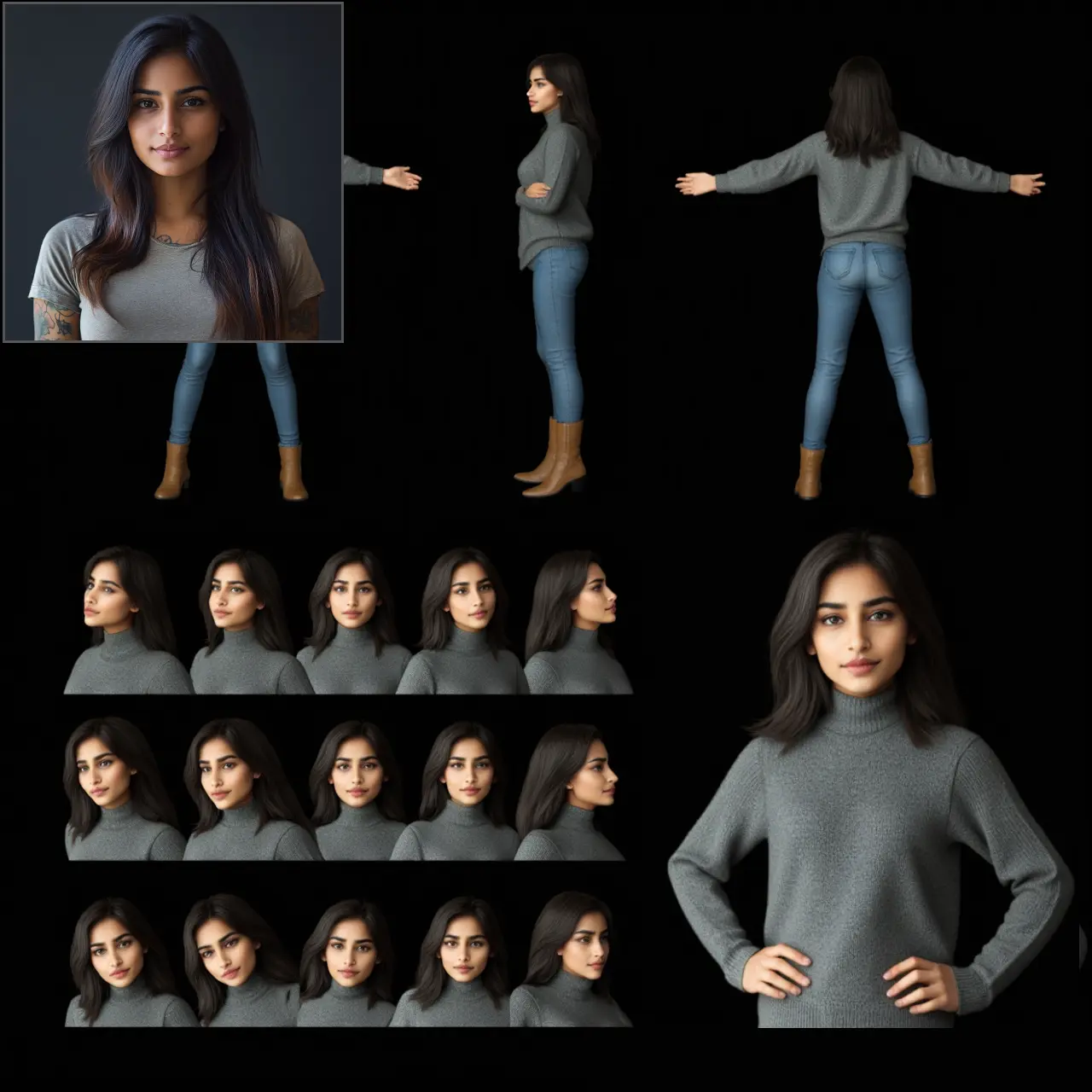ComfyUI Node: InstructPixToPixConditioning
InstructPixToPixConditioning
Categoryconditioning/instructpix2pix
ComfyAnonymous (Account age: 833days) Extension
ComfyUI Latest Updated
2025-04-05 Github Stars
73.39K
How to Install ComfyUI
Install this extension via the ComfyUI Manager by searching for ComfyUI- 1. Click the Manager button in the main menu
- 2. Select Custom Nodes Manager button
- 3. Enter ComfyUI in the search bar
Visit ComfyUI Online for ready-to-use ComfyUI environment
- Free trial available
- 16GB VRAM to 80GB VRAM GPU machines
- 400+ preloaded models/nodes
- Freedom to upload custom models/nodes
- 200+ ready-to-run workflows
- 100% private workspace with up to 200GB storage
- Dedicated Support
InstructPixToPixConditioning Description
Facilitates conditioning for image-to-image translation tasks with precise control over generated images.
InstructPixToPixConditioning:
The InstructPixToPixConditioning node is designed to facilitate the conditioning process for image-to-image translation tasks, specifically tailored for the InstructPixToPix model. This node takes in positive and negative conditioning data, a VAE (Variational Autoencoder) model, and an image, and processes these inputs to generate latent representations that can be used for further image manipulation tasks. The primary goal of this node is to encode the input image into a latent space while incorporating the conditioning information, which helps in guiding the image transformation process. This node is particularly useful for tasks that require precise control over the generated images, such as style transfer, image inpainting, or other creative AI art applications.
InstructPixToPixConditioning Input Parameters:
positive
The positive parameter is a conditioning input that provides positive guidance for the image transformation process. It is typically used to specify the desired attributes or features that should be emphasized in the output image. This parameter accepts a tuple of conditioning data, which helps in steering the model towards generating images that align with the positive conditioning.
negative
The negative parameter is a conditioning input that provides negative guidance for the image transformation process. It is used to specify attributes or features that should be minimized or avoided in the output image. Similar to the positive parameter, it accepts a tuple of conditioning data, which helps in steering the model away from generating images with undesired characteristics.
vae
The vae parameter is a Variational Autoencoder model that is used to encode the input image into a latent space. The VAE plays a crucial role in transforming the image into a format that can be manipulated based on the conditioning inputs. This parameter ensures that the image is properly encoded, allowing for effective image-to-image translation.
pixels
The pixels parameter is the input image that needs to be transformed. It is provided as a tensor and is processed by the VAE to generate a latent representation. The dimensions of the image are adjusted to be compatible with the VAE's requirements, ensuring seamless encoding and subsequent manipulation.
InstructPixToPixConditioning Output Parameters:
positive
The positive output is the processed positive conditioning data that has been augmented with the latent representation of the input image. This output is used to guide the image transformation process, ensuring that the desired attributes specified in the positive conditioning are emphasized in the final output.
negative
The negative output is the processed negative conditioning data that has been augmented with the latent representation of the input image. This output is used to guide the image transformation process, ensuring that the undesired attributes specified in the negative conditioning are minimized or avoided in the final output.
latent
The latent output is the encoded latent representation of the input image. This representation is generated by the VAE and is used in conjunction with the positive and negative conditioning data to guide the image transformation process. The latent output provides a compact and manipulable format of the input image, enabling effective image-to-image translation.
InstructPixToPixConditioning Usage Tips:
- Ensure that the input image dimensions are compatible with the VAE model by adjusting them to be multiples of 8. This helps in avoiding any dimension mismatch issues during the encoding process.
- Use the
positiveandnegativeconditioning parameters effectively to guide the image transformation process. Clearly define the desired and undesired attributes to achieve the best results. - Experiment with different VAE models to find the one that best suits your specific image transformation task. Different VAEs may produce varying latent representations, impacting the final output quality.
InstructPixToPixConditioning Common Errors and Solutions:
Dimension mismatch error
- Explanation: This error occurs when the input image dimensions are not compatible with the VAE model's requirements.
- Solution: Ensure that the input image dimensions are multiples of 8 by adjusting the width and height accordingly.
Invalid conditioning data
- Explanation: This error occurs when the conditioning data provided in the
positiveornegativeparameters is not in the expected format. - Solution: Verify that the conditioning data is provided as a tuple and follows the required structure for the InstructPixToPix model.
VAE encoding failure
- Explanation: This error occurs when the VAE model fails to encode the input image into a latent representation.
- Solution: Check the compatibility of the VAE model with the input image and ensure that the VAE is properly initialized and loaded.
InstructPixToPixConditioning Related Nodes
RunComfy is the premier ComfyUI platform, offering ComfyUI online environment and services, along with ComfyUI workflows featuring stunning visuals. RunComfy also provides AI Playground, enabling artists to harness the latest AI tools to create incredible art.





